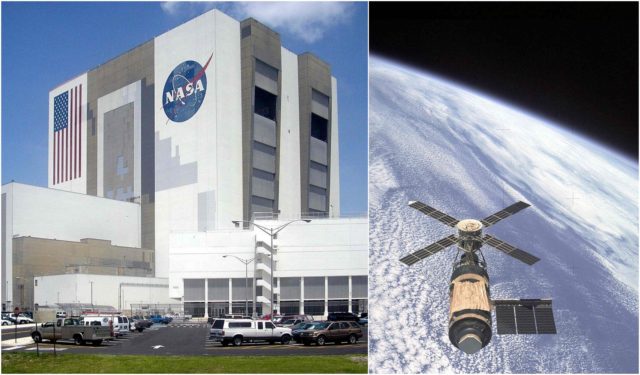
This checkered past has led to interesting, and weird, moments. But let’s not judge too harshly. NASA put humans into space with technology that most of us have in our cellphones. It’s their job to push the boundaries, as well as to think outside the box. So, come along and read these 7 surprising facts about NASA.
-
The shake test.

This test, by today’s standards, might seem weird, but it was legitimate at the time of its inception. When most of us think of the tests that NASA performs, we probably call to mind meticulously controlled wind tunnels and vacuum chambers. The early Apollo program technology was so experimental, however, that the designers needed to test its basic physical properties. They needed to figure out if the new spaceships withstand the physical strains of a launch to space before they even tackled complex ideas like ablation or heat damage.
Their solution: the shake test. Gather a bunch of people, grab your section and shake it around. If something falls off, fix it so it doesn’t happen again. It’s low tech, but it worked.
-
Gold foil.
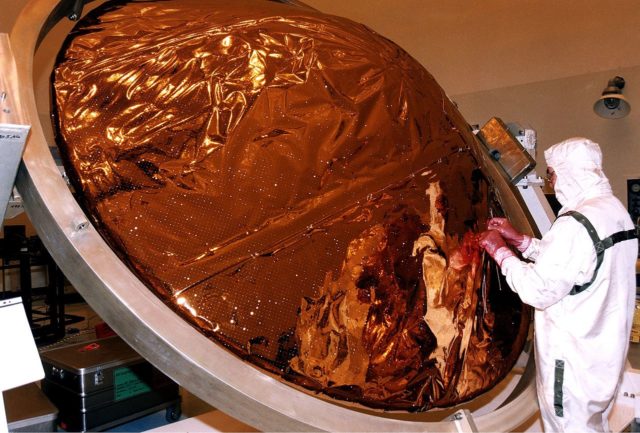
MLI covering the heat shield of the Huygens probe.source
NASA has often come under attack for not being frugal enough. However, there are many ambitious, brilliant individuals employed at the agency, many of who are unconcerned with feathering their own nests. This means that NASA is one of the most frugal institutions. That is not to say that it doesn’t spend a lot of money, but it has to. The gold foil that NASA uses is a good example.
Gold is, obviously, expensive and highly coveted. For industrial use, it seems comically opulent, but it does have a lot of useful characteristics. Gold has a high heat capacity and is highly reflective, so it’s perfect for shielding. It is dense enough to stop some higher-energy particles and is perfect for conducting electronics work. Unlike other metals, gold does not tarnish or oxidize. Adding to that, gold’s physical malleability makes it much easier (and cheaper) to work with while still inside Earth’s atmosphere. So, in the end, gold foil may seem unnecessary, but it’s a quirky tool that’s vital to NASA’s success.
-
Animals in zero gravity.

When humans (or any animal) are in space, blood distribution throughout the body and our sense of direction gets out of whack. According to reports, humans are, in general, are poor at figuring out how to walk in low gravity. In response to this, NASA has spent many years running animal behavioral experiments that involved low- or zero-gravity. The theory was that perhaps some animals had an already well-developed way of dealing with low gravity. Unfortunately, it turns out that humans and animals really don’t.
For the tests, NASA has sent up frogs, birds, mammals, insects, fish, and more. None of the specimens managed very well—regardless how many tries they got. These studies weren’t a complete failure. They found out that animals that were more evolved for flight on earth had a harder time figuring out zero gravity. Most of these tests were conducted on parabolic flights, so the weightlessness only lasted about ninety seconds.
-
NASA and the military.
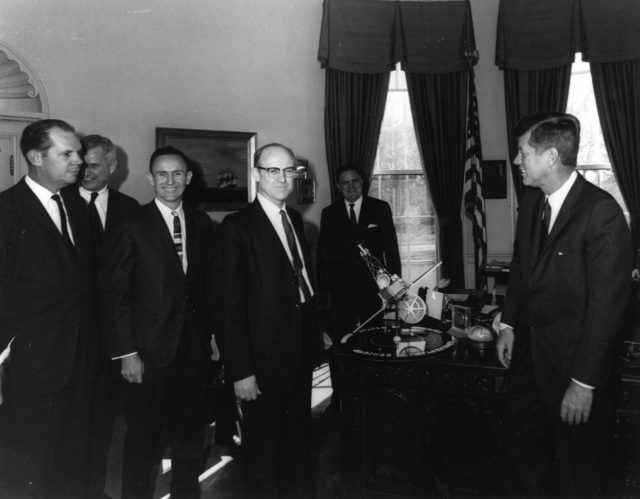
William H. Pickering, (center) JPL Director, President John F. Kennedy, (right). NASA Administrator James E. Webb (background) discussing the Mariner program, with a model presented. source
Perhaps unsurprisingly, the US government and military pushes into the world of future-tech as a means to global dominance. Many politicians have looked to NASA as a potential source of military and strategic power. It might seem contradictory to put a scientific agency into such a position. NASA, however, wasn’t always a scientific organization. Back in the day, ARPA (now called DARPA) had to struggle with NASA over aviation projects.
The military had wanted NASA to develop rockets that could deliver bombs, not astronauts. For a time, the agency was happy to oblige—the military knows how to get and remain funded. Furthermore, NASA was a fairly relevant political entity, even outside of the context of the space race. At that time, there wasn’t a hard distinction between scientific and political space projects. Today, due to the fact that the scientists employed at NASA have a wider range of skills and that it’s difficult to deal with scientists and national security, NASA has separated from military projects. DARPA, NSA, and other agencies now receive most of the security- and economy-focused projects. That, and the Cold War, has basically stagnated the funding for NASA.
-
The space pen.
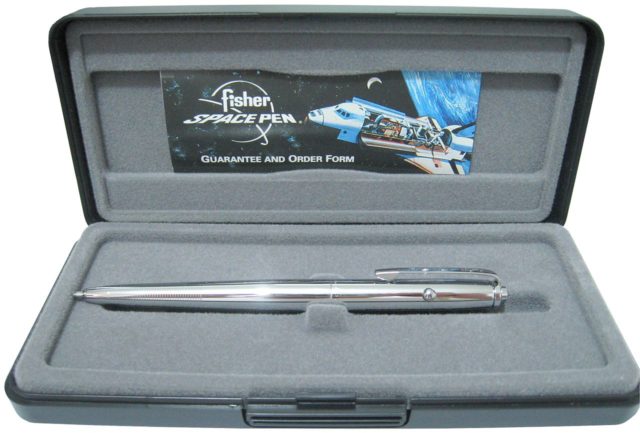
An AG-7 Astronaut Space Pen in presentation case.source
This never happened. The story goes like this: NASA spent millions on a pen that could write in space while the Soviets, all the more practical, used pencils. No space agency would use pencils. They all use pens, but they do not spend millions of dollars on them. They used regular pens, with a good reason. The dust from a lead pencil will migrate into the air filtration system and jam up the works—this would be a serious problem in the super-recycled environment of space vessels. Even if the particles didn’t muck up the filtration system, they could lead to negative effects for astronauts who breathe them in.
-
NASA pays people to do nothing.
Of all the criticisms that could be used against the space agency, laziness is not one of them. Most of NASA’s employees have PhDs and they often they boast impeccable records as fighter pilots or researchers. On top of that, they are all in peak physical condition.
The confines of space will be very restrictive, and it is necessary for NASA to research the physical effects of that inactivity before they send people all the way to Mars and back. So, that’s why the agency pays people to sit around and do nothing. Applicants will be paid around $9,000 per month to lie in bed. For up to seventy days, participants will spend every moment lying down. Some of the readers might wonder why NASA doesn’t just use hospital-bound patients. The point of the study is to see how a voluntary avoidance of exercise affects healthy people. The challenge is to keep the participants healthy. As they learn that, they also learn how to keep astronauts healthy on the trip to the Red Planet and beyond.
-
NASA is designing a warp drive.
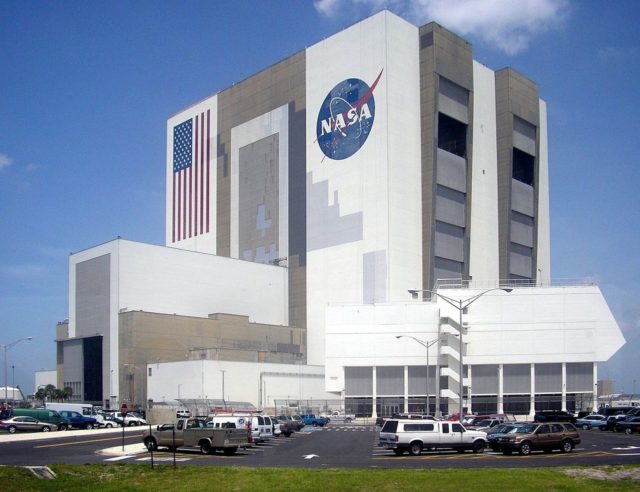
Vehicle Assembly and Launch Control at Kennedy Space Center.source
NASA has a team of researchers working on sci-fi inspired concepts that seem contrary to the image of a hard scientific institution. Thus, the idea of a warp drive. The lab in charge of this project is the Innovative Advanced Concepts lab. It has taken a physicist’s look at the issue and looked at the feasibility of bending space-time to go faster than light. Although light may actually be unbeatable in terms of speed through space, we might be able to adjust the amount of space through which we must travel.
A proposed warp drive design works by creating a space-time expansion behind the ship and a compression in front of it. This essentially carries the ship forward on a wave made of space-time. The downside of this design is the unthinkable amounts of energy required. This hasn’t dampened the enthusiasm for this project. In fact, they created CG renders of what the ship might look like.


